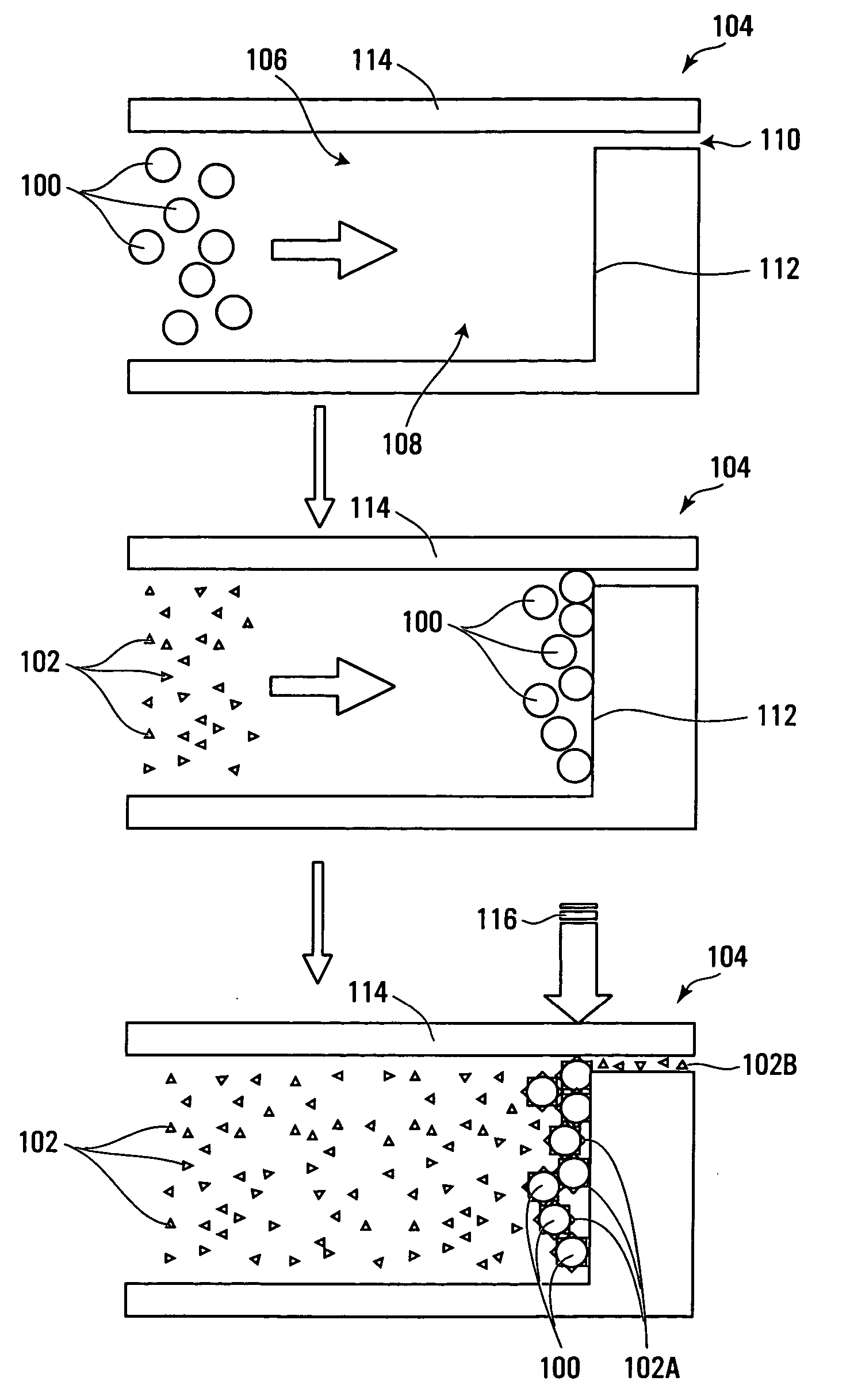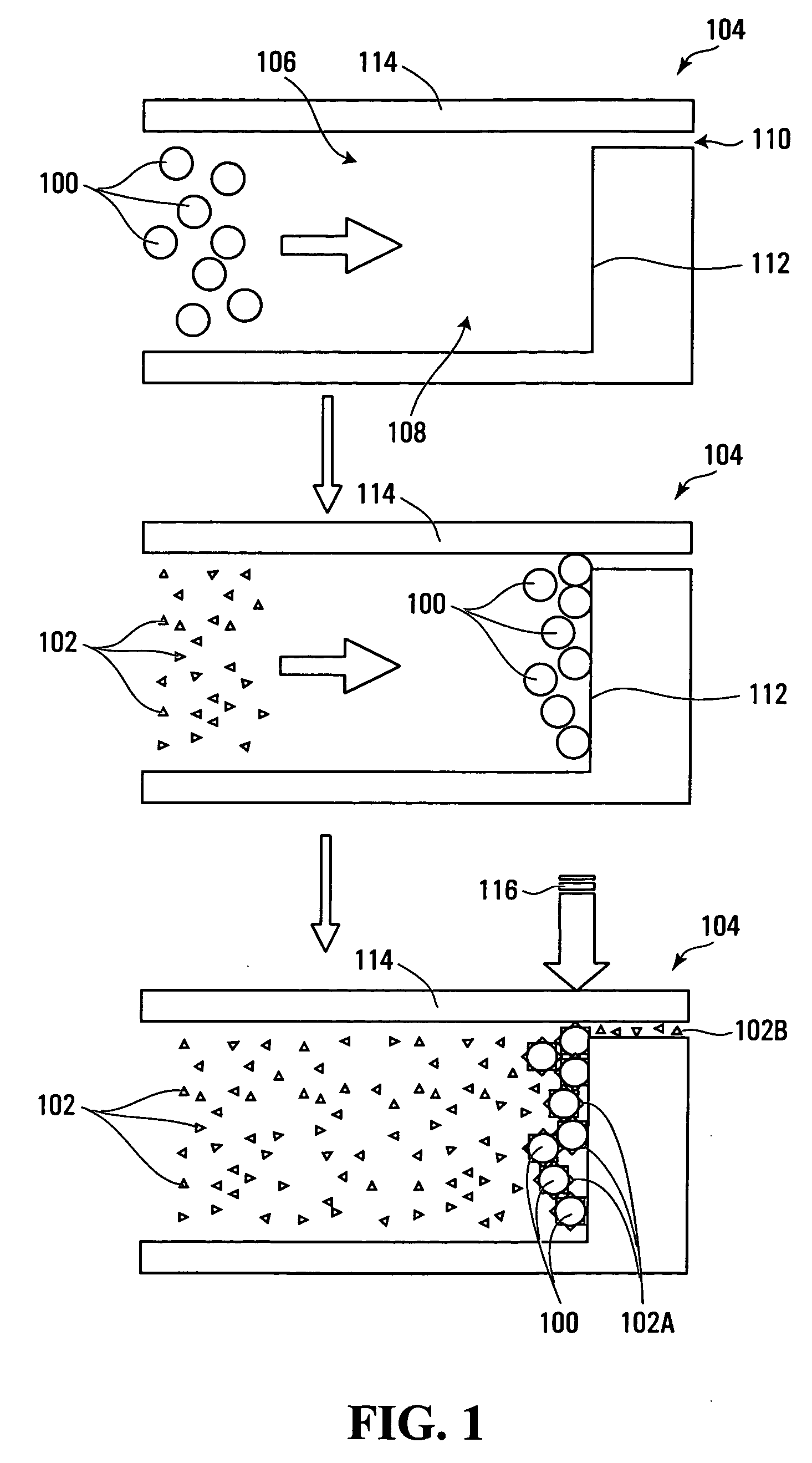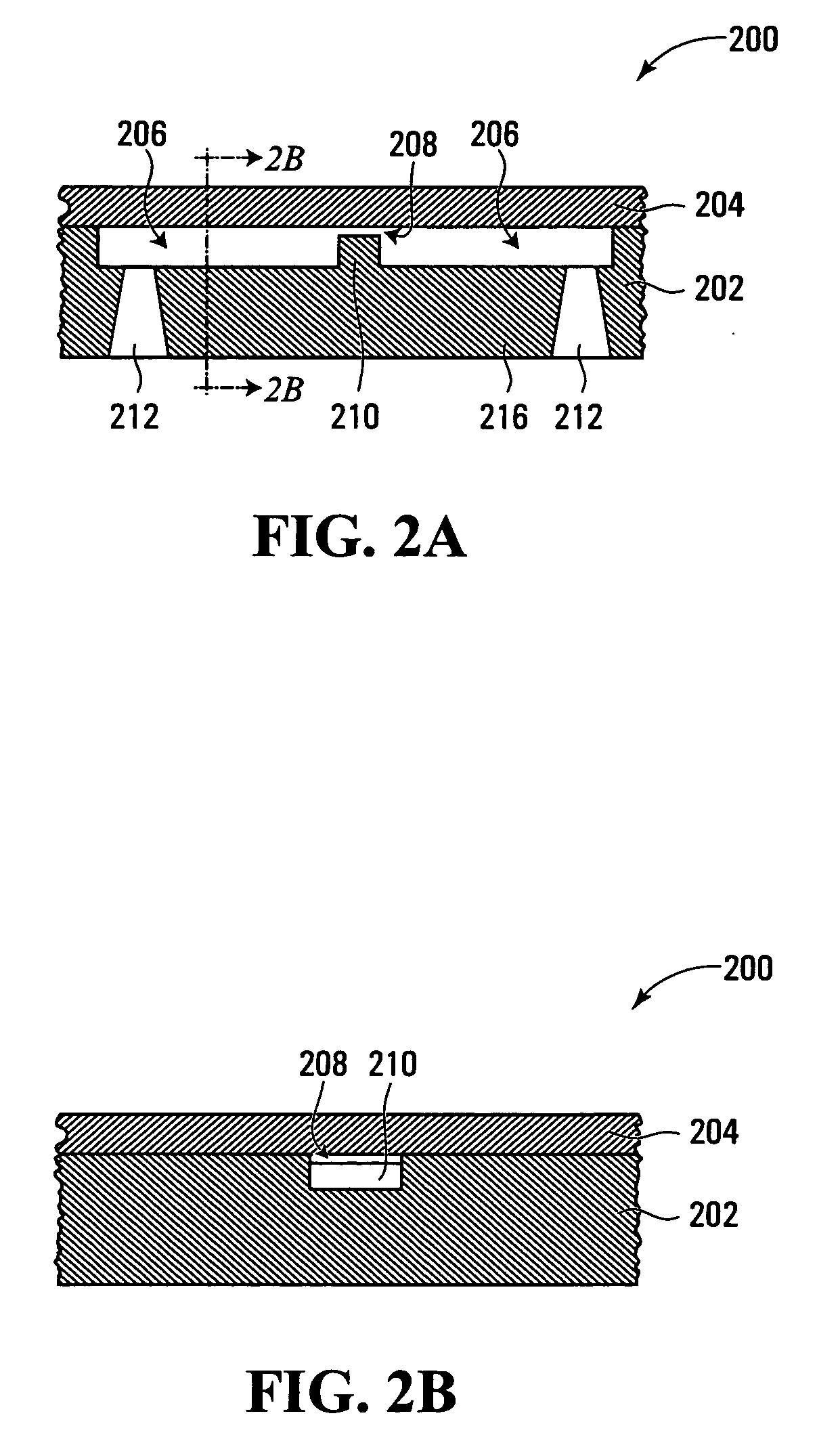Method and apparatus for detecting analyte with filter
- Summary
- Abstract
- Description
- Claims
- Application Information
AI Technical Summary
Benefits of technology
Problems solved by technology
Method used
Image
Examples
example
[0077]FIG. 6A is an image taken during an example procedure for detecting florescent beads. The device used had three parallel weir-type filters as illustrated in FIGS. 2A and 2B. The weir gaps were about 3-4 μm deep. The beads had diameters of 1, 4, 10 and 15 μm. The beads were injected into the conduits and flushed with water at a flow rate of 20 μl / min. An epifluorescence microscope was used to monitor the locations of the beads. The microscope had a cooled charge-coupled device (CCD) camera, a 100W HBO™ bulb, and appropriate filter sets. As shown, the larger beads were all trapped before the weirs. It was observed that the 1 μm beads passed through the weirs. A similar test with a device of weirs about 1 to 2 μm deep showed similar result: only 1 μm beads passed through the filer and the larger beads were trapped.
[0078]FIGS. 6B and 6C are images taken in procedures carried out for detecting microbial cells Cryptosporidium spp. and Giardia spp., both being protozoan cells, using...
PUM
 Login to View More
Login to View More Abstract
Description
Claims
Application Information
 Login to View More
Login to View More - R&D
- Intellectual Property
- Life Sciences
- Materials
- Tech Scout
- Unparalleled Data Quality
- Higher Quality Content
- 60% Fewer Hallucinations
Browse by: Latest US Patents, China's latest patents, Technical Efficacy Thesaurus, Application Domain, Technology Topic, Popular Technical Reports.
© 2025 PatSnap. All rights reserved.Legal|Privacy policy|Modern Slavery Act Transparency Statement|Sitemap|About US| Contact US: help@patsnap.com



